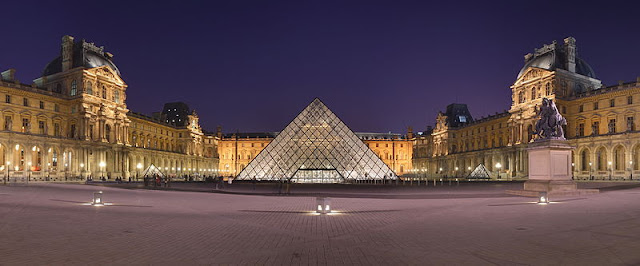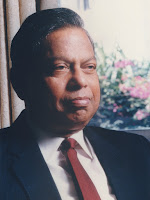Dr. John Clifford Chapman - mentor extraordinaire passes away
 |
| Dr. J. C. Chapman in late 1960's |
Beyond borders: Dr. John Clifford Chapman, (Jack to his colleagues and Dr. Chapman to his students), had a long and distinguished teaching and research career in structural engineering at Imperial College. His career at Imperial College spanned over several decades during which he mentored some fifty researchers leading to their respective PhD's and publications in refereed journals. His students came from all across the globe. During my time, for example, in the second half of the 1960's and early 1970's, his students included: Kevin Moffat from New Zealand, Don Williams from Australia, PTK Lim from Singapore, SP Sarana/ Prabir Neogi/ me from India, Bijaan Aalami from Iran, Lloyd Yam from Hong Kong, Alexander Stamenkovic from Yugoslavia, Ian Tereszkevic/ Peter Malewski from Poland, Patrick Dowling from the Irish Republic, Paul Lyons and Tony Duke from England.
Dr. Chapman treated all his students equally. He was able to bridge with consummate ease the considerable sociological and cultural divergences that these students brought with them. His mantra was simple. The unifying strand was structural engineering. Everything else became secondary. This way Dr. Chapman worked beyond borders and to my mind this is his single greatest legacy. He was simple and humble. He preferred to understate than overstate. Never pompous, always humane. I remember him as a father figure and a great human being.
Dr. Chapman treated all his students equally. He was able to bridge with consummate ease the considerable sociological and cultural divergences that these students brought with them. His mantra was simple. The unifying strand was structural engineering. Everything else became secondary. This way Dr. Chapman worked beyond borders and to my mind this is his single greatest legacy. He was simple and humble. He preferred to understate than overstate. Never pompous, always humane. I remember him as a father figure and a great human being.
Mentor extraordinaire: I believe that Dr. Chapman had an invisible third eye which could visualize the deflected shape of any structure under given loading condition and along that route he could conceive the complete response of that structure. He did not seem to attach too much of a value to the volumes of print-outs that were churned out by his students using what was then rather fancy gadgets, namely, the Atlas and IBM 360 computers until and unless those tallied with his own perception. He used those outputs merely to confirm his own perception and to add supporting finer numbers in the papers that were to be published subsequently.
 |
| Prof. S. R. Sparkes in late 1960's |
Due to Dr. Chapman's unifying influence, we, his students, became a family away from our homes. We worked together helping and complementing each other without any sense of rivalry or jealousy; we went for lunch together in groups across the Exhibition Road to the South Side refectories (then brand new, now demolished and replaced by 21st century buildings); in summer months we would go for post lunch walks in the Kensington Gardens, and we often partied together. We had a great time together devoid of any pettiness or backbiting. This was possible due to the excellent work culture that Dr. Chapman instilled in us. And, in all of this we were fortunate to have Professor Stanley Robert Sparkes as the head of structural engineering, who was an extraordinary human being. He laughed heartily and encouraged lavishly. He actually complemented and supported Dr. Chapman. Everything around Prof. Sparkes was sunny and bright. He lived life in full scale. I noticed that Dr. Chapman himself behaved like a younger brother to Prof. Sparkes. But this blog post is not about Prof. Sparkes and I must get back to Dr. Chapman.
Dr. Chapman relied heavily on laboratory experimentation. Whenever possible he would go for larger experimental models instead of scaled down smaller models. If possible, he would prefer full scale models. In this he was again absolutely right because structural engineering is an applied technology and no theory in structural engineering is of any use unless it can be proven to be true by testing fabricated and constructed real life structures.
Tributes from others: So how do some of his other former students and colleagues, all my contemporaries at Imperial College, remember him? On hearing the sad news of his demise, these are some of the things they said in the past couple of days:
Dr. Paul Lyons, Managing Director, FEA Ltd, Kingston upon Thames: "Jack’s ability to get to the bottom of a problem were truly amazing. The one example I remember was several of us spending the day discussing the rotation of a point. I have to say that Jack’s approach has helped me significantly in my career at LUSAS. Some of my colleagues might even call me Jack II if they had known him. He was a truly great research engineer."
Dr. Prabir Neogi, Special Advisor, Electronic Commerce Branch, Spectrum, Information Technologies and Telecommunications Sector, Industry Canada: "Those of us who were fortunate enough to have done our PhD's under the guidance of Dr. Chapman may feel, like I do, that we have lost our Guru. In my opinion, the concrete filled steel tubular columns used at the multi-level interchange of the M4 and M5 motorways at Almondsbury will continue to stand as one of the many visible tributes to his work, as they have done for over 40 years. To those of us who worked in the Civil Engineering Department of the Imperial College of Science and Technology during the 1960s, Dr. Chapman's passing signifies the loss of another link with the era of Professors Skempton and Sparkes."
Alan Dorman, Consulting Engineer, Surrey: "I do remember Dr Chapman with great affection and gratitude. When he was the Director of Constrado he very much regarded me as his right hand man, which I considered a great honour."
My inheritance:
During my tenure as a post-doctoral research fellow, Dr. Chapman took me to the meetings of the CP117 code committee which was then formulating the provisions of composite design under the chairmanship of the legendary Oleg Kerensky. Dr. Chapman was a member of that committee and he had me co-opted so that I was able to learn the way a code committee functions and could help in providing the detailed data that years of research at Imperial had produced and accumulated. It was a large committee comprising a room full of eminent structural engineers. What I noticed was that Dr. Chapman seldom spoke but when he did people listened and almost always his point was accepted. That quintessentially was Dr. Chapman.
He was a truly great structural thinker and it is one of my greatest fortunes that I have had the opportunity of working under him for so many years.
 |
| Dr. J. C. Chapman in late 1990's |
 |
| Dr. Chapman: relaxing in retired life |
There are more than a few anecdotes that I could possibly narrate here but this has become a little too long already and I must end now.
I salute (in Sanskrit I would say Pranam) my Guru, my mentor!
[Note: Dr. Chapman passed away during the third week of February. It was only a few days short of his 88th birthday, which would have been on 21st February 2011. I inserted the last two photographs of Dr. Chapman in this post, a few days after fist uploading the post. I borrowed these two photographs from the service sheet at the Service of Thanksgiving that was held at the St. Peter's Church in Ardingly on 3rd March 2011--my friend Peter Lim, another devoted former student of Dr. Chapman, sent me the service sheet. Thank you, Peter].
[Note: Dr. Chapman passed away during the third week of February. It was only a few days short of his 88th birthday, which would have been on 21st February 2011. I inserted the last two photographs of Dr. Chapman in this post, a few days after fist uploading the post. I borrowed these two photographs from the service sheet at the Service of Thanksgiving that was held at the St. Peter's Church in Ardingly on 3rd March 2011--my friend Peter Lim, another devoted former student of Dr. Chapman, sent me the service sheet. Thank you, Peter].



Thank you, Dr Sen, this is a lovely, warm and kind appreciation.
ReplyDeleteAndrew
Thank you Andrew. I wish to take this opportunity to share with you one of my visual memories related to Dr Chapman and you. In the second half of the 1960's, in his office chamber at the Imperial College, Dr Chapman used to keep a framed family photograph on his side cupboard. In that photograph you appeared as a junior school boy. I clearly remember that. Now I see your picture in Google. Stay well. With my good wishes, Hirak
DeleteThank you, sir, I will send a link to your post to my mother Judy, who I am sure will greatly appreciate it - she has a tablet now, and a carer to help her with it.
DeleteAndrew
That would be wonderful, Andrew. I have met Mrs Chapman Sr. very briefly on one or two occasions when she dropped by at the Imperial College to meet with Dr Chapman and possibly go some place in town together. I send my warm regards to her and wish her continued peace and happiness.
Delete